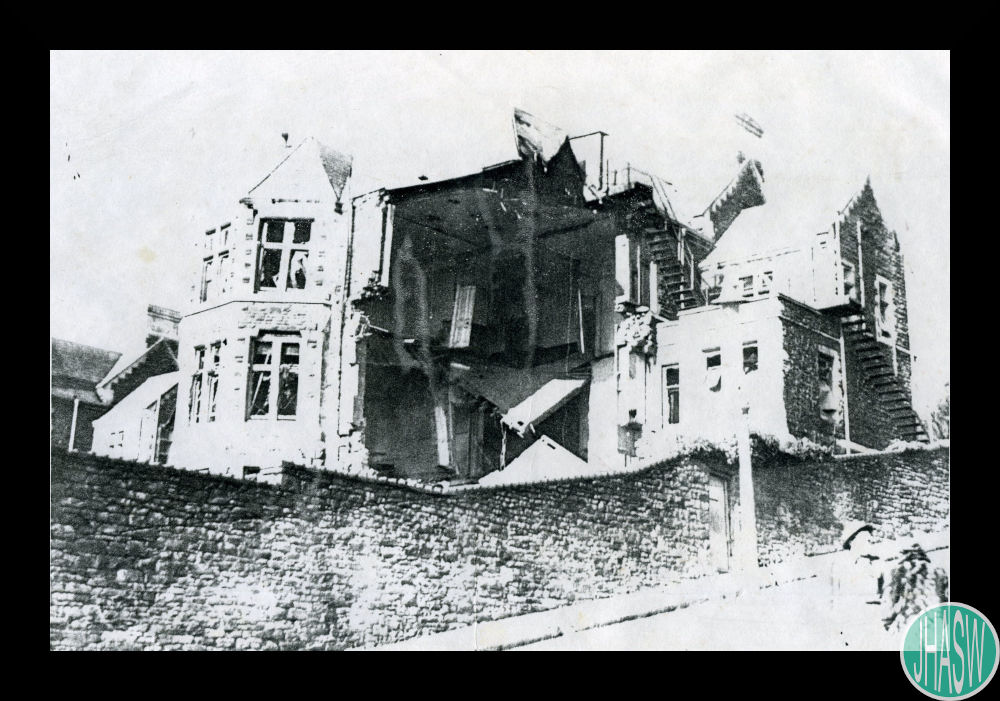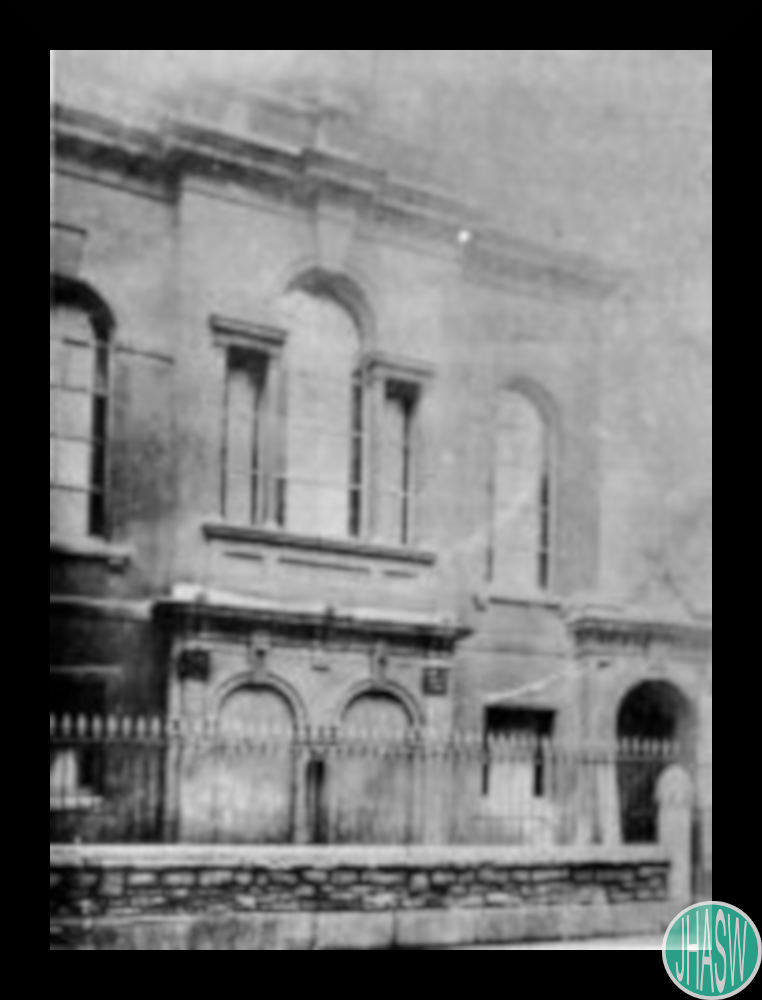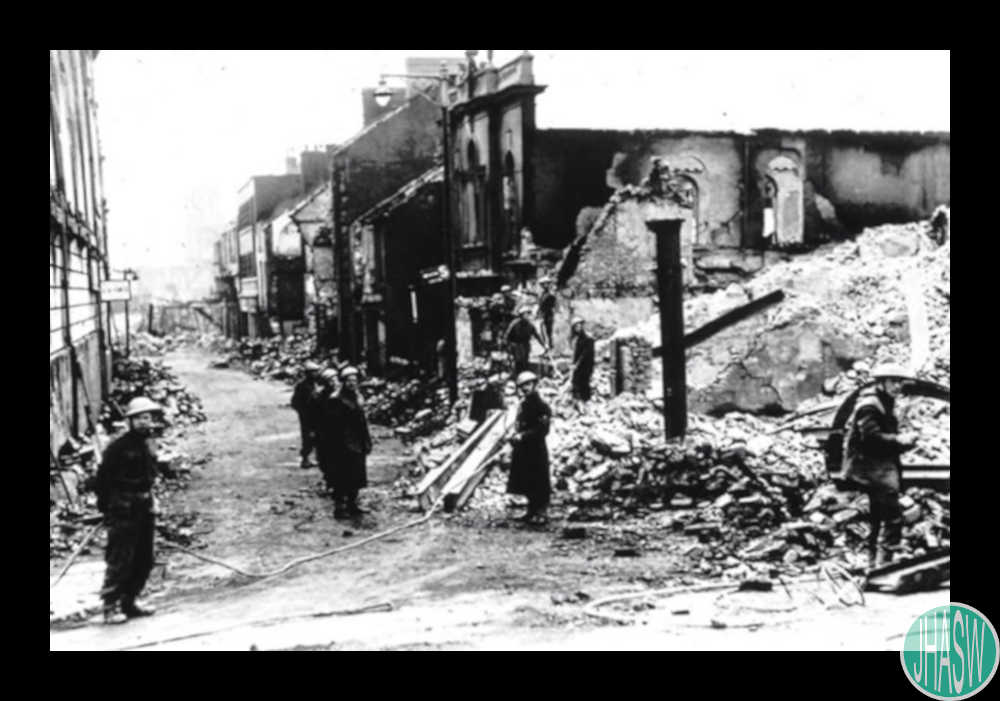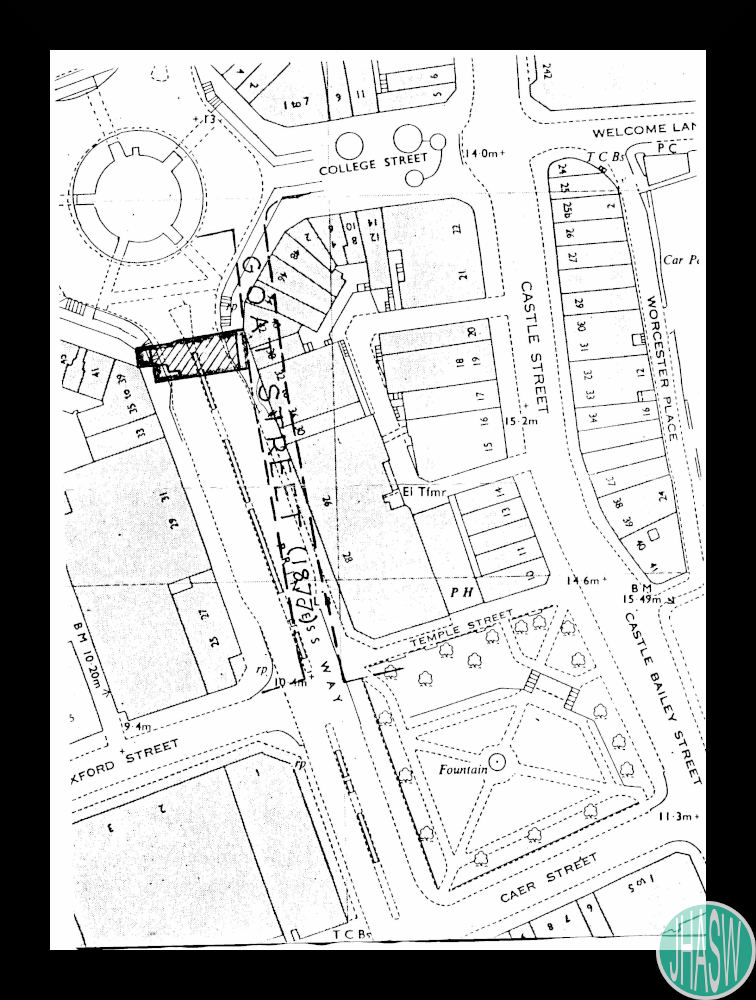Gellir lawrlwytho cynnwys at ddefnydd anfasnachol, megis defnydd personol neu ar gyfer adnoddau addysgol.
Ar gyfer defnydd masnachol cysyllwch yn uniongyrchol gyda deilydd yr hawlfraint os gwelwch yn dda.
Read more about the The Creative Archive Licence.
Disgrifiad
Collection containing four black and white photographs of the severe damaged sustained by Goat Street Synagogue, Swansea, and surrounding buildings in an air raid in February 1941. Also included is one black and white map overlaid with the location of Goat Street and the Synagogue in 1877. In 1857, it was first proposed that a synagogue be built on Goat Street for Swansea’s growing Jewish congregation. The land was bought that very year and when the building work was completed the finished synagogue was consecrated and opened by Chief Rabbi Hermann Adler on 25 September 1859. Money for the building costs had been raised through the wider Jewish community. The Goat Street Synagogue which was the largest in the congregation’s history – it would accommodate 120 men and 108 women – was designed by Henry J. Bayliss of Swansea and built by Mr Holtam of Bath. The 50th Anniversary of the synagogue was celebrated in 1909, with the same Chief Rabbi who had seen its genesis in attendance. The Goat Street congregation faced its share of troubles in the First World War when its finances were under a great strain and a fire caused extensive damage to the synagogue. It was during the bombing of February 1941 that Goat Street Synagogue was destroyed. The bombing that took place in Swansea from 19 to 21 February 1941 was so destructive that it became known as the ‘Three Nights’ Blitz’. While Cardiff was also bombed during World War Two, Swansea endured the most intense of the attacks in Wales. So unrelenting was the bombing carried out over those three days that comparisons to the London Blitz were inevitable. The Luftwaffe (Air Force of the Third Reich) killed 230 people and some estimate that over 400 were injured. It also destroyed 857 properties and damaged a further 11,000. Swansea was a target of the Luftwaffe because of its docks. However, there was another motive behind the bombing: to crush civilian morale. Following the attacks, one of Swansea’s firemen described how: ‘...there was only rubble. I couldn’t find anyone. The town was all flat.’ While many historic buildings including the castle and museum survived, the city’s commercial centres were wiped out along with its entertainment and social venues. While other religious buildings such as the Unitarian Chapel were used for services following the raid, a new synagogue was clearly needed. In August 1945 a price was agreed on for the site of the replacement synagogue. A war damage claim helped with the costs and the foundation stone was laid by Chief Rabbi Dr Israel Brodie on 30 October 1952. The Chief Rabbi also consecrated the synagogue on 28 April 1955 and it opened the same year. In 1980, the 25th Anniversary of the new synagogue: Ffynone Synagogue was celebrated. Sources: Saunders, N. H. The Swansea Jewish Community: Beginning and Becomings, (Swansea: Unpublished, 1980). Swansea Museum, The Blitz (2021), [accessed 10 May 2021] David Dulin, Swansea still regenerating 75 years after Blitz, (19 February 2016). [accessed 10 May 2021] Dr Martin Johnes, Bombing raids in Wales, (2014). [accessed 10 May 2021] History.com, Hitler authorizes the founding of the Reich Luftwaffe: This Day in History, 1935 February 26, (2021). [accessed 10 May 2021]











Oes gennych chi wybodaeth ychwanegol am yr eitem hon? Gadewch sylwad isod
Sylwadau (0)
Rhaid mewngofnodi i bostio sylw